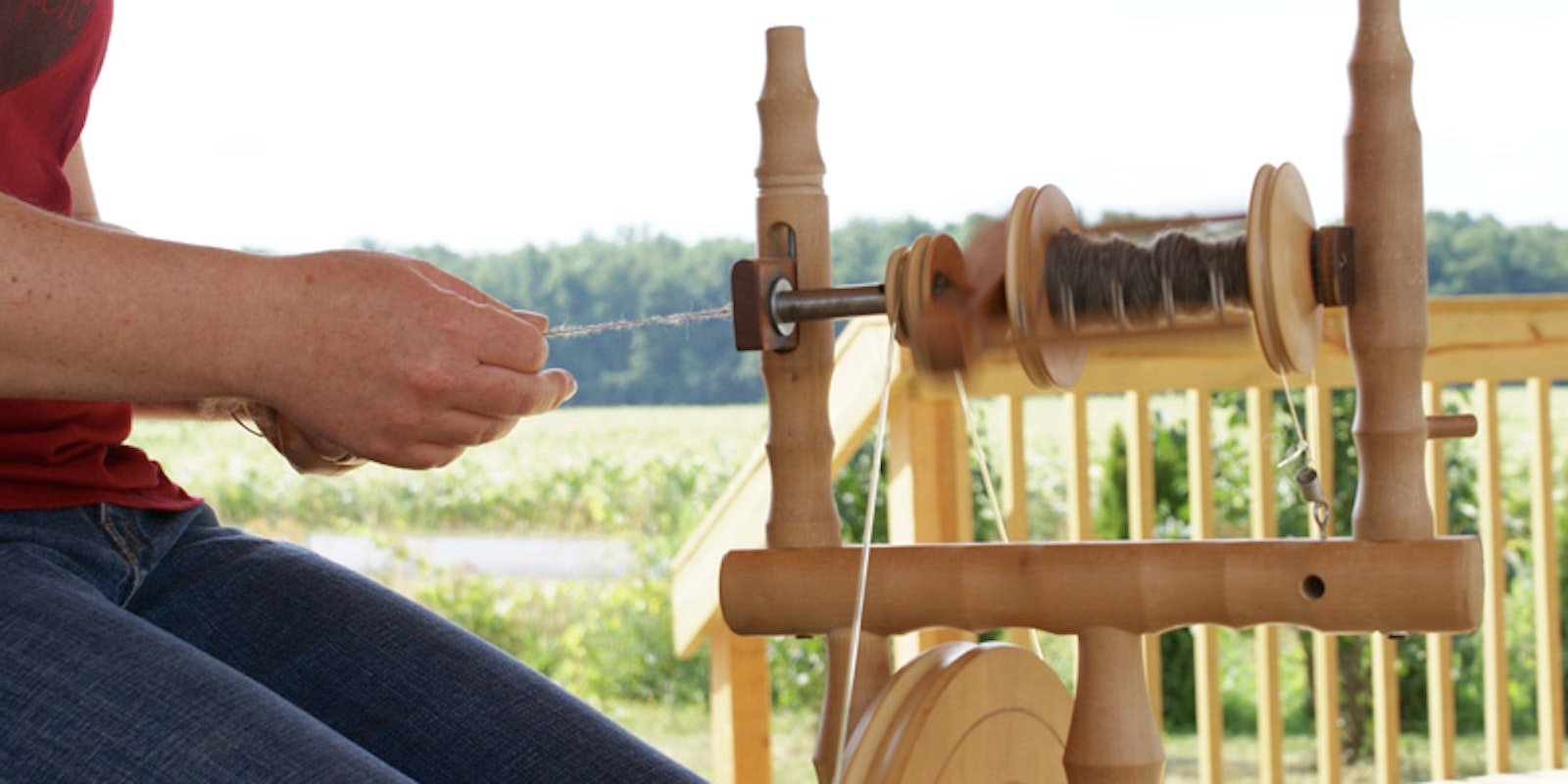Many of us have jobs and other activities that fill-up our days leaving precious few moments in-between to sit at the wheel and indulge in our love of fiber. TheSpin Off_ Winter 2017 issue’s “I am a Spinner” featured a Q&A with spinner and winemaker Lindsay Stevens. To find out what winemaking and handspinning have in common, read on!_ Q: Tell us about your day job.
A: I am the winemaker at Treleaven by King Ferry Winery, located in the beautiful Finger Lakes region of New York State. I have been in charge of production from fruit to bottle for nine harvests. My days vary, but on any given day you might find me driving the fork lift to move wine barrels around the facility, in the lab doing analysis, cleaning tanks, filtering wine, crushing grapes, or at my desk doing paperwork.
Lindsay testing a barrel of wine.
Q: How did you become a spinner?
A: I started spinning the same year I picked up knitting, after my first daughter was born. I learned to knit from my grandmother as a kid but didn’t pursue it past the requisite lopsided scarf. After picking it up again, I realized that I had a taste for lovely, expensive yarns, and I wanted to know how and why they were made. I built my first spindle with a dowel, a C-hook, and a toy wheel. After a lesson at my LYS with some silk hankies, I was off and running. A friend gave me a Shetland fleece from her favorite ram, Rambo, and I started hand prepping it with a dog brush and dyeing it with Kool-Aid. The only payment that my friend requested was a hat made from Rambo’s fleece, and I was happy to oblige her with one for her and one for her daughter as well—my first two handspun projects. A year after I started spinning on my spindle, I purchased my first wheel.
Q: Do your job and your spinning ever overlap?
A: Winemaking is a balance between art and science; I see fiber art in a similar way. Humans know about the concept of finesse—when to intervene and when to allow something to continue because a sense of intuition tells them, based on experience, not to interfere. Some examples are at the dyepot waiting for the last of the blue to strike, or waiting for a fine cabernet to age to the optimum level before pulling it from the barrel to finish and then bottle. There is a feeling of pride holding a finished bottle of wine and feeling a finished piece of knitwear that you spun, dyed, and knitted. Seeing something through from start to finish is immensely satisfying, especially if the process doesn’t happen overnight, whether that is a bottle of cabernet or a hat made from Romney.
Lindsay indulging in her craft. Photos by Michelle Kokot
Q: How does spinning fit into the rest of your life?
A: I make wine by day; I have my family to care for in the evenings, so my fiber work tends to happen in the evenings or on weekends when I can fit it in. I like to have a knitting project ready for long drives and vacations, so I usually work toward a goal of having spinning projects completed by the spring. I find myself washing fleeces in the summer because I can air-dry them outdoors. I prep, dye, and spin in the fall and winter when I can dry skeins hung by the woodstove. I am not a prolific fiber artist in this stage in life, but I get immense satisfaction in finishing two or three projects in a year.
Q: What is your favorite thing about spinning?
A: I find spinning to be very relaxing. When I sit down at the wheel, I can feel myself relax; my breathing slows into a content rhythm. It’s what I like to do to unwind after a long day—that and enjoy a glass of wine, of course!
—Lindsay
Do you know someone whom we should feature in “I Am a Spinner?”
We’re especially interested in spinners with unusual careers, locations, and perspectives. Drop us a line at [email protected]. If we use your suggestion, we’ll send you a treat from our stash of fiber goodies! Because of the volume of submissions we receive for this feature, we will only notify you if your nomination is selected.



